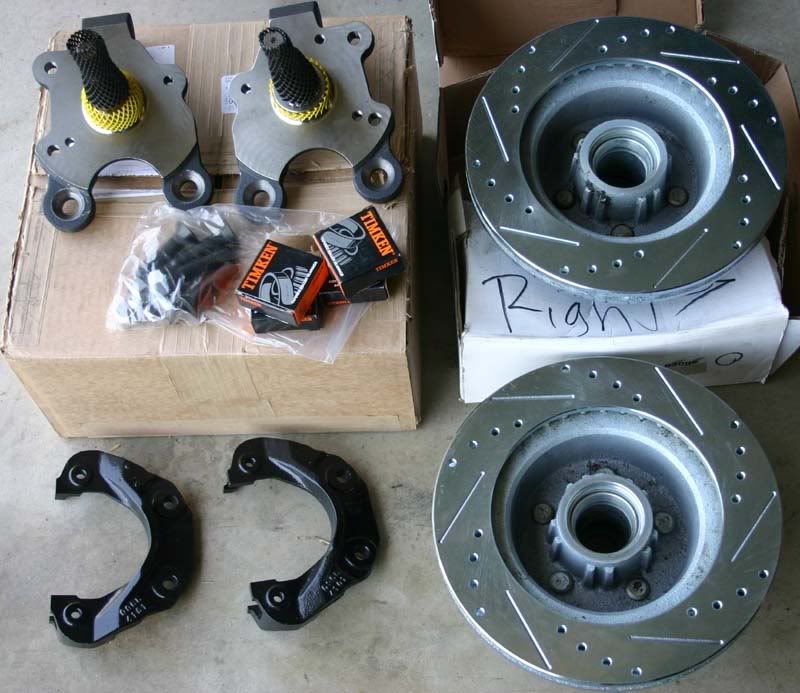Spudmaster
Well-Known Member
I have been toying with the idea of drilling my 12 inch rotors to aid the stopping power of the system. Has anybody done this ?
he's right.....make sure your rear brakes are good and make sure they are adjusted up to proper specs.....allot of people miss the proper adjustment on rear brakes.....:-DIt really doesn't do anything for a street car. Best bet is to get better pads.
On a side note.... You can't turn drilled rotors (or you will have a very hard time finding a place that will).
If you are having problems stopping an A-body with 12" rotors you have other problems.
i was going to buy the 12" drilled slotted rotors as you can get them for pretty much the same money as stock rotors, but its stuck in my head that they cant be cut. i really have no use for a rotor that cant be cut for that kind of money. i dont know if its true or not but i heard valid points why you dont cut them. i just oredered a std set from advance auto.

It really doesn't do anything for a street car.
I may be wrong but I think the biggest thing is the risk of damage to the cutting equipment.
Better to tell one customer "NO" than to tell 10 customers "We can't" because our machine is down.
Slot depth would have no real effect on "unequal" braking. If you cut them so deep the slots went away maybe, but again, its a temperature thing, not a change in braking force directly. Most of the rotors I have seen have a pretty deep chamfer on them, you'd have to cut them pretty deep to eliminate it completely, and then you could still re-chamfer them. But keep in mind even the stock rotors start out at 1", and can only be turned down to .940", which only works out to .030" cut on each side. That wouldn't get rid of the chamfer on my rotors.
I've never actually heard that the drilled/slotted rotors couldn't be cut, but then again, I haven't needed to have a set cut yet. I'm not surprised though, the problem with cutting them would come up with the cutting tool chattering in and out of the holes/slots, running the risk of breaking the tooling, which is likely why places don't want to cut them. Not that it can't be done, but its not a "set it and forget it" type operation anymore, you'd actually have to pay attention to what you were doing and know enough to check things out when you were done to make sure they were still chamfered etc. So if the big retail brake chains don't want to touch them I wouldn't be surprised.
On that note, on looking at my drilled and slotted rotors, I don't see a minimum thickness stamped on them, which may or may not mean anything. Most of the rotors I see these days do not have much distance between stock and minimum, after wear and tear maybe 1 good cut, they really aren't parts that you can use and re-use like you used to. As I mentioned, the stock rotors can only have a total of .060" cut off them. That isn't much, especially when you split it between 2 sides!
I run drilled and slotted 11.75" rotors on my Challenger, as you can see in the pics. They were $140 with shipping, making them cheaper than a lot of stock replacements. And given that I'd like my car to eventually see some road course time, I went with drilled and slotted. I'm not sure what these cars usually see in terms of mileage between brake pad changes, but I doubt its often enough to worry about the financial impact of having to replace the rotors with the pads. I drove the living piss out my '04 SRT4, and had over 40k miles on the front pads with room to spare when I sold it. The Challenger weighs an extra 600 lbs (srt4=2900 lbs), but my brakes are bigger too. :-D . And if you ever went "metal to metal" on your rotors, with only a .060" cut to start with you'd have to toss them anyway.

I have been toying with the idea of drilling my 12 inch rotors to aid the stopping power of the system. Has anybody done this ?
At the track you will see nothing unless you have a very serious track car that can make use of them.
